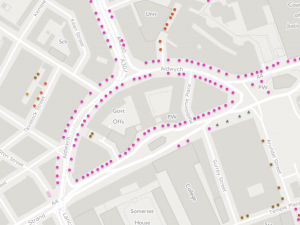Greening Aldwych Stop 5: a Plane tree paradise?
From Stop 4: Australia House, walk west along Aldwych (St Clement Danes will be behind you). As you walk, notice how many trees line Aldwych today. Stop outside the main entrance to Bush House.
Or, go back to Stop 4: Australia House (and a brief history of... poo).
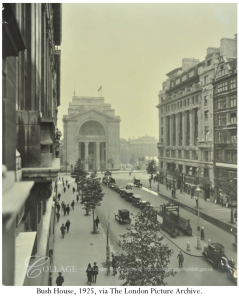
Bush House, 1925, via The London Picture Archive, Catalogue No. SC_PHL_01_437_90_415.
By Fran Allfrey
The Plane trees around Aldwych were planted before many of the building were completed, as you can see from the photographs.
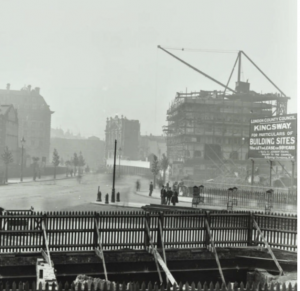
From Bush House, looking up Kingsway, 1905, via London Picture Archive, Catalogue No. SC_PHL_01_437_3326
It’s hard to imagine this view now without the trees! It's strange to think that this is probably the greenest that this area has been for over 400 years.
I wanted to tell you more about the London Plane tree as they are my nemesis every spring.
There two theories about how the London Plane came to be. The technical name is Platanus x acerifolia, also Platanus x hispanica and Platanus x hybrida. All three botanical names refer to the same tree. As the 'x' in the name shows, the London Plane is a hybrid created by crossing the Oriental plane, Platanus orientalis with the Western plane, Platanus occidentalis.
One theory goes that the trees are a natural hybrid of the Oriental and Western Plane, discovered in Spain and imported to Britain in the 17th century. An alternative story is that the mid-17th century botanist John Tradescant the younger discovered a hybrid tree in his famous nursery garden in Vauxhall.
The plane trees became popular. They are ideal for city planners, as the grow quickly, with a narrow stem, can be pollarded - cut back - vigorously, and produce plenty of leafy boughs for shade.
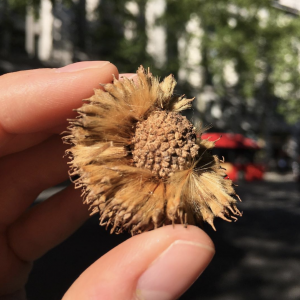
A plane tree seed, May 2019.
But there is a downside: many people are allergic to the Plane tree 'trichomes' and pollen. The trees are infact all male trees, and have been bred to be extra resiliant to pollution. Small studies have found that people with allergies to grasses often test positive to allergies to Plane tree pollen. However, a larger number of people will suffer irritation from the 'trichomes', the fine, spiky hairs from the leaves, and the larger seeds blowing about the streets every spring.
By the 1920’s around 60 per cent of trees in London were London Planes. This has now fallen to an estimated 4 per cent in central London. BUT not on Aldwych!
Can you guess how many plane trees there are around this gyratory?
There are 89 Plane trees around Aldwych, give or take a few more depending on where you cut off Aldwych at the corners.
The map also records 4 oak trees on the south east side of Aldwych, outside 180 Strand, the building now used for Fashion Week and other pop up events.
Keep walking around from Bush House, and take the steps on your left at India Place. If you'd rather avoid stairs, you can keep going around Aldwych, and keep following the path around, looping back to Montreal Place, which joins India Place.
Here you'll see the two ‘Koelreuteria paniculata’ otherwise known as the 'goldenrain tree', or, appropriately enough for the plaza of the Indian High Commission, the 'pride of India'.
As a general rule of thumb, Trees for Life calculate that four mature trees will offset one tonne of C02e. In the west we produce about a tonne of CO2 every 2 to 3 weeks per person. So the 100 trees around Aldwych only absorb about 25 weeks of 1 person's emissions on that estimate. That doesn't really feel like much of a dent, especially as Aldwych is a traffic-heavy area.
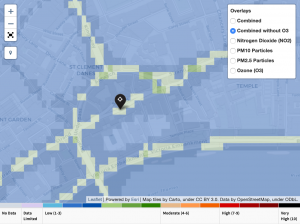
London Air Quality NowCast screengrab.
Above is a screengrab of the London Air Quality NowCast from a Saturday in May. You can see what it looks like right now at this link. Even on the weekend, with relatively fewer cars going through, you can see how traffic affects the pollution readings.
Keep going towards the south side of the Strand, toward St Mary le Strand. From across the road, you can see Ginkgo and Magnolia trees outside the church, but they don’t seem to have been recorded on the map.
Directions to next stop: St Mary le Strand
Use the traffic lights to make the crossing from outside India House on Montreal Place, to the gates of St Mary le Strand, the church in the traffic island.

